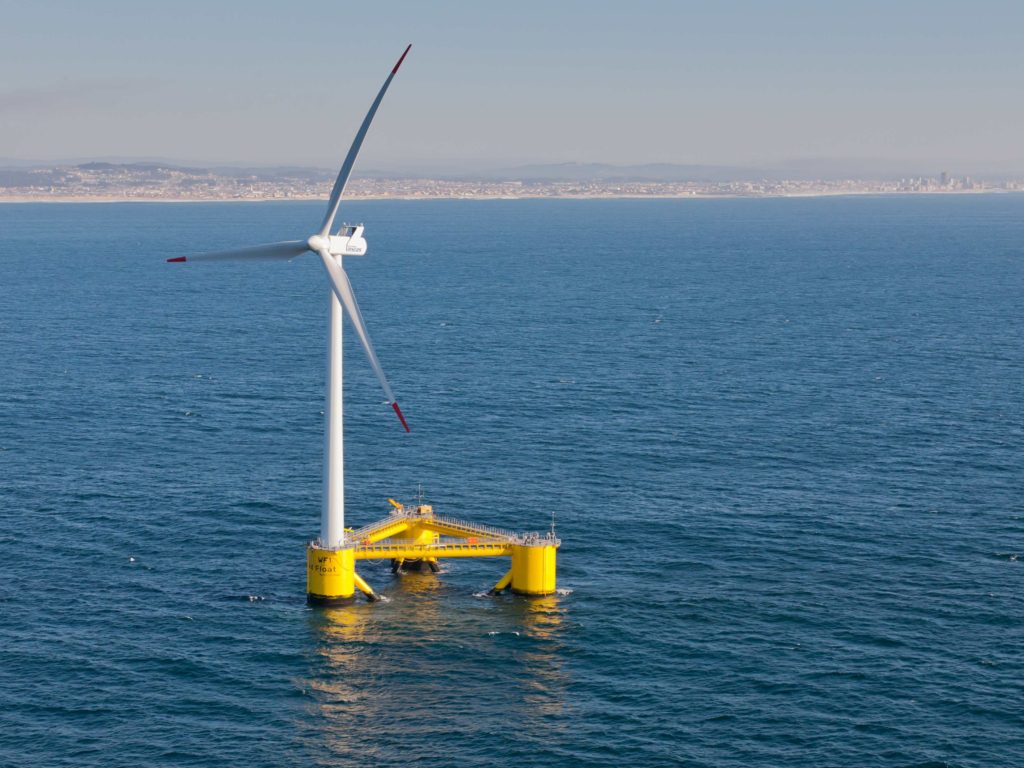A recent argument critical of the development of Phase I bottom-fixed offshore wind farms in the Irish Sea and off Connemara has emerged, suggesting the State should divert its energies into building floating offshore wind (FLOW) far out to sea. It is claimed that FLOW has less environmental impact, and has the advantage that greater distance from shore will remove the visual impact on nearby residents. The IWDG is concerned that any delays to the current plans to develop Offshore Renewable Energy (ORE) will result in far more environmental cost to the marine environment, and that wagering all on a technology still in development is a risky approach.
The seas around Ireland show signs of an ecosystem under pressure, with climate change an underlying factor. Temperature-driven changes in fish species composition, abundance and distribution; changes and mismatches in the dynamics of phytoplankton and zooplankton blooms; the startling drop in harbour porpoise numbers in the Celtic and Irish Seas; the shift in baleen whale sightings northwards on the west coast; and the devastating effects of the H5N1 avian bird flu outbreak in 2023. All of these are either directly attributable to or made more likely by rising sea temperatures. It is clear that we must do all we can to arrest and hopefully reverse human-induced climate change, and the development of offshore wind to replace fossil-fuel based energy is key to our efforts. Every fraction of a degree counts, especially as we may be approaching dangerous and irreversible global tipping points such as melting icecaps, sea level rise, or the failure of the Atlantic Meridional Overturning Current (AMOC), the vital ocean circulation that controls and moderates our climate in the Northeast Atlantic.
The development of FLOW is central to Ireland’s longer-term plans to decarbonise our energy systems, and is embedded in the draft Offshore Renewable Energy Development Plan (OREDP II). It forms part of a logical progression, as followed in other jurisdictions, from bottom-fixed turbines which are built closer to shore with proven technology and with good access to the contemporary grid. As available shallow-water sites are developed, focus will switch over time to distant, deeper and more challenging sites using floating platforms, which will allow time for the technology to mature.
FLOW will have its own environmental impacts, some of which are unique. Secondary entanglement in mooring lines and cables are of particular concern to the IWDG, this refers to ghost fishing gear getting wrapped around in-water infrastructure, posing a greater risk of whales and dolphins getting caught and drowning. Sound measurements at the Hywind test site off Scotland indicated unexpected high-amplitude noise coming from the mooring system, against a background of relatively high operational noise levels. Benthic impacts from scour and drag are greater due to the mooring lines and anchors needed to keep the platforms in position. If piles are used as anchors, then the construction phase faces the same underwater noise challenges as bottom-fixed. The in-air components, the tower and turbine blades, pose the same physical risk to seabirds. Floating platforms with their extensive mooring systems take up a great deal of seabed, making it difficult or impossible for commercial fishing to take place on the sites. These are topics to be addressed when we get to the planning and impact assessment stage for FLOW.
Building windfarms is expensive, billions will be spent getting each project to the point where it produces electricity. There are two metrics which can be used as rough indices of relative cost, levelized cost of electricity (LCOE) and strike price. LCOE is the price per unit of electricity generated required to recover the costs of building and operating a windfarm during its working life; strike price is the price achieved at auction, with adjustment. By either measure, estimated costs for FLOW are multiples of the costs for bottom-fixed turbines. At a recent auction for ORE in the UK six bottom-fixed projects were granted Contracts for Difference (CfD) at an average strike price of £55.78/MWh compared with £139.93/MWh in the same auction for Greenvolt, a FLOW project off Peterhead. Industry experts DNV currently quote the LCOE for FLOW in the US at $290/MWh compared with $133/MWh for bottom-fixed, and although the cost of the two technologies is expected to converge in the coming decades as both become cheaper, FLOW will always be more expensive.
In all ORE development, whether floating or fixed, the up-front cost is borne by the developers. Suggestions, or demands, are often made that they should commit to various undertakings and the eNGO sector does this in relation to mitigating identified impacts on the environment. It should be remembered however that additional costs will end up on our electricity bills, regardless of where in the country we live.
Ireland has committed to building 5GW of offshore wind through the Phase I projects along with another windfarm at An Tonn Nua off the south coast under the plan-led Designated Maritime Area Plan (DMAP) process. At this stage we are unlikely to achieve the 2030 target to build these windfarms. While the Phase I spatial planning under the old developer-led system was imperfect, the urgency remains and the time to act is now. Every development has impact, be it ecological, financial, social, visual or emotional. The development of ORE in the coming decades should not become a manufactured collision between the climate crisis and the biodiversity crisis. It is not a zero-sum game, rather it is a complex process requiring detailed evidence-based assessment at all stages to maximise the societal and ecological benefits and minimise or eliminate negative effects.

